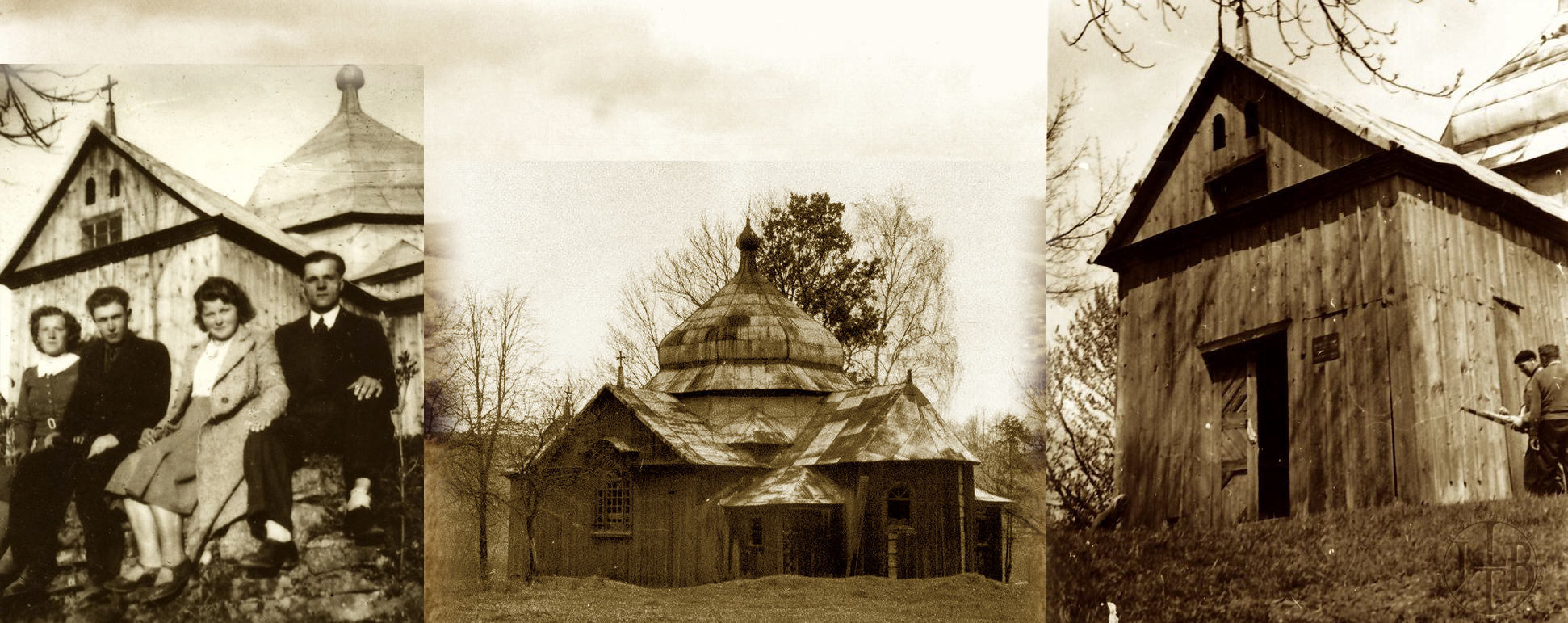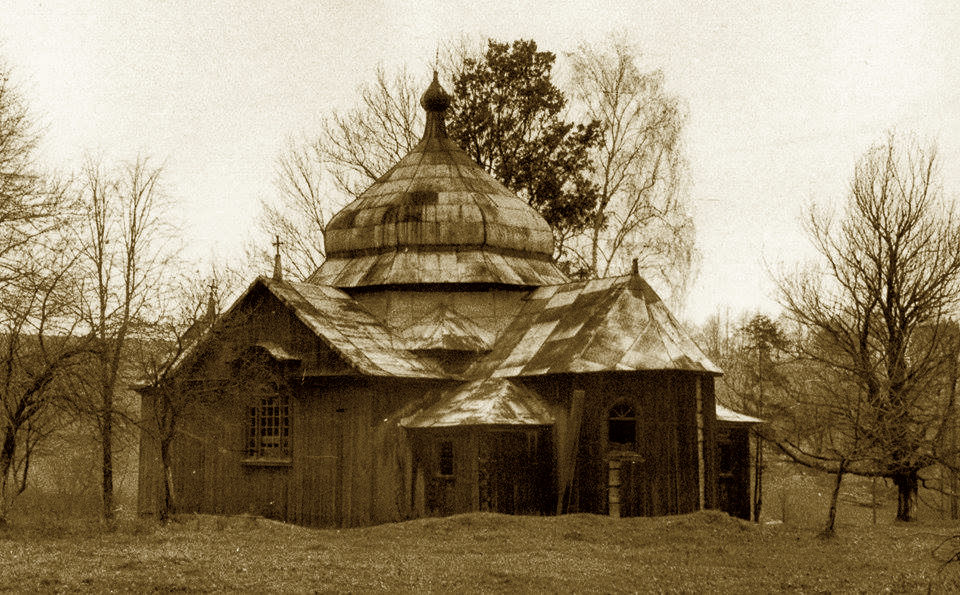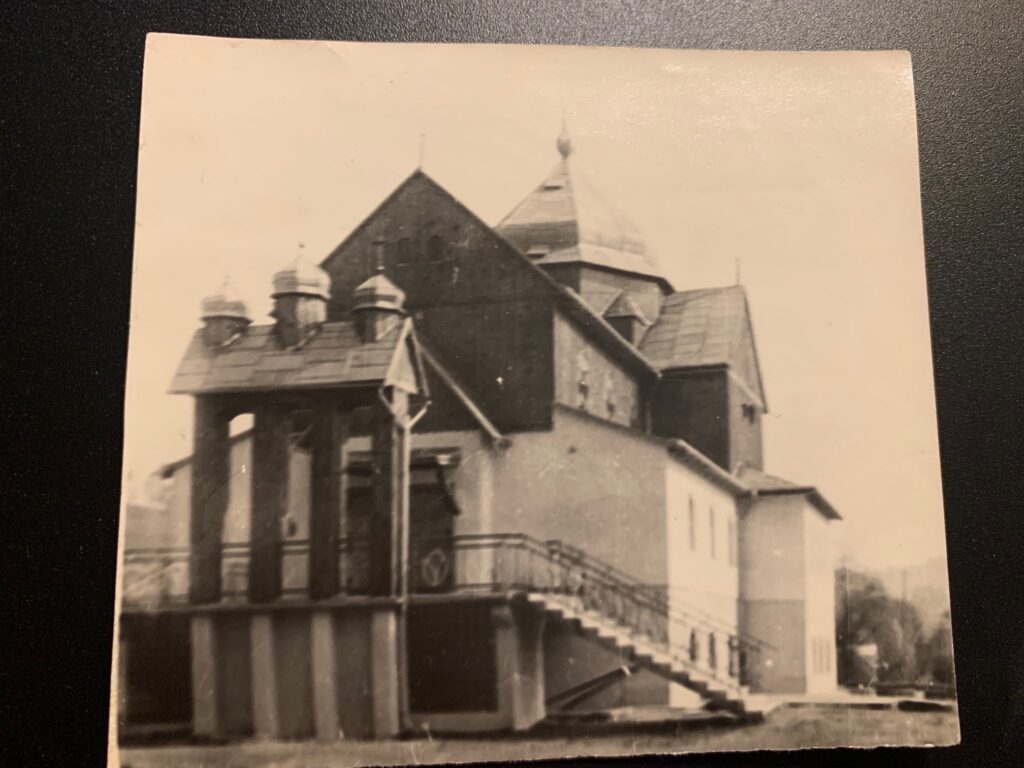Church in Dudynce

The Lemko church is based on a tripartite design (sanctuary, nave, and choir), which evolved from the 6th-century Byzantine churches. The high belfry appears elsewhere in the eastern Lemko Region (Lesko and Sanok county). The traditional three-dome design (with the highest dome over the choir section) is retained, although they do not dramatically vary in height. Depending on the size of the church, some churches in this area have even four or more domes. The wooden churches are the most distinctive feature of the region’s landscape. Virtually every village had a church at one time, and most were constructed almost entirely of wood. They are usually situated close to rivers and creeks (on the banks), on hillside slopes, and always on an east-west axis.85 They are almost always surrounded by a circle of trees, from which the emerging towers and domes present a most dramatic image. The churchyard is typically encircled by a fence, either of wooden framework or of stone. Stone, iron, or wooden cross monuments are found in the churchyard, and the village cemetery typically is part of or immediately adjacent to the churchyard.
The Dudynce church was the center of their community. My father would celebrate their “Praznyk,” (holiday) on December 26, the Feast of St. Stephen, the first Christian martyr. This was a tradition he maintained with his family ties.

Twenty years ago, Gloria Dran posted this question: I am looking for someone who lives in Poland near Dudynce or Sanok. The mystery is “what happened to the wooden Greek Catholic chapel from Dudynce village. One theory says that it was dismantled after the Greek Catholic residents were deported about 1947 and the lumber was put in storage where it rotted. Another theory says that it was transported as a whole to the village of Komancza and incorporated into their new Greek Catholic church. Another theory says that Komancza wanted the lumber for its new church but found the stored lumber to be rotted and unusable. Apparently in Komancza there is a plaque telling about its relationship with Dudynce. Does anyone know the truth.


My father’s handwriting read: The church was moved from Dudynce to Komanchi, with an “imitation” of the church place on top of the Greek Catholic Church.